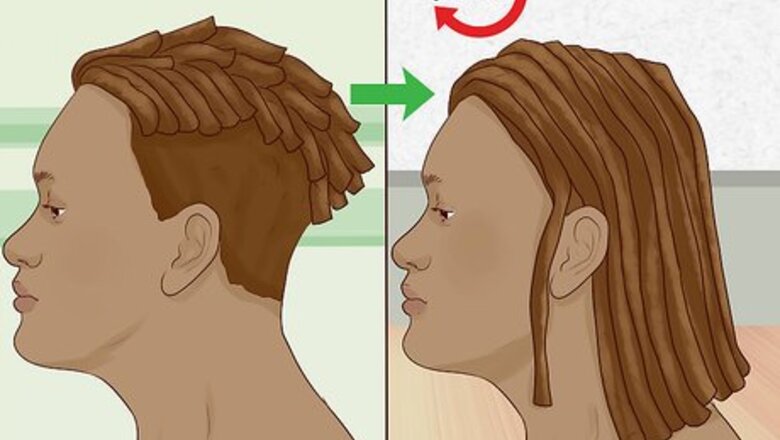
views
Letting Your Hair Lock Naturally
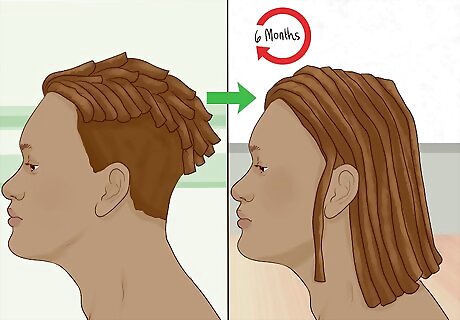
Stop getting haircuts to grow dreadlocks. As your hair grows longer, it will start locking naturally on its own. But this is the least advisable method for growing dreadlocks, as it may take at least 6 months for those with naturally curly or kinky hair. While you’ll have to do less preparatory work, growing your hair out will result in uneven locks that look worse than dreadlocks developed using other methods. As your hair starts to lock on its own, you may need to find a professional hair stylist to help shape them.
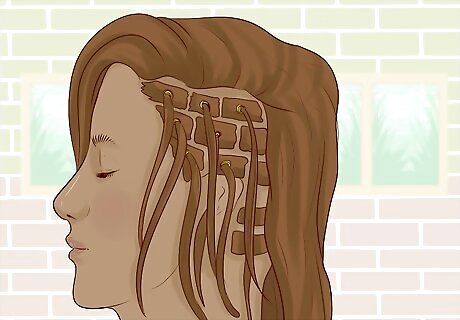
Shape your growing clusters of hair. Palm roll your locks in a uniform direction – clockwise – once they begin to lock on their own. You can also shape your locks by applying rubber bands from the individual clusters of hair. Use one at the root of the cluster and one at the tip for the best results. If your locks are of widely uneven size and don’t look good, you may need a professional stylist to help comb out and then backcomb your hair from scratch. Make sure that your hair is dry before you twist your locks. Your hair is more fragile when it's wet.
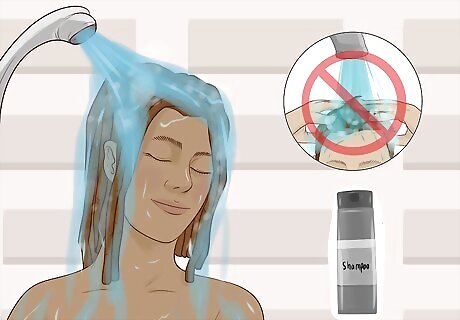
Wash your hair once a week with regular shampoo. Avoid massaging your hair or other motions that may shape your hair and interfere with the locking process. Just let the shampoo and soap flow naturally through the hair, and then rinse it out. As your hair starts to lock, you'll want to wash the still-forming locks every couple of days. Keep your hair free of extra moisture by wrapping it in a bandana when it’s raining or when before you plan to exercise.
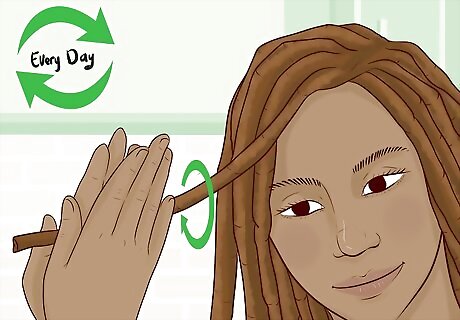
Roll your locks to help them maintain their shape. Keep palm rolling your locks every other day to keep your hair compact, and the dreadlocks tight. Roll individual locks that are becoming frayed or loose every day, rather than every other day. If your locks are still growing very unevenly, or are fraying after at least 3 months of palm rolling, schedule an appointment with a stylist.
Backcombing Straight or Wavy Hair
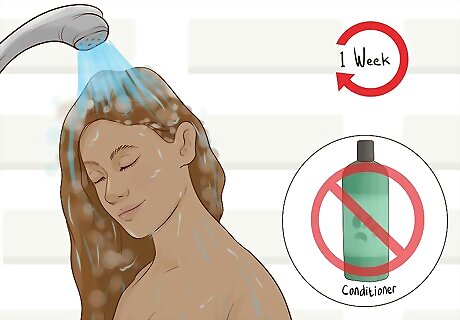
Avoid using conditioners for a week before backcombing your hair. Conditioner makes it more difficult for your hair to lock naturally. Continue to wash your hair as frequently as possible, but make sure your shampoo contains no relaxing agents. If doubtful about whether you’re using a shampoo that will hurt your dreadlocking efforts, wash your hair with just regular soap and water. You can bleach or color your hair during this time if you want.
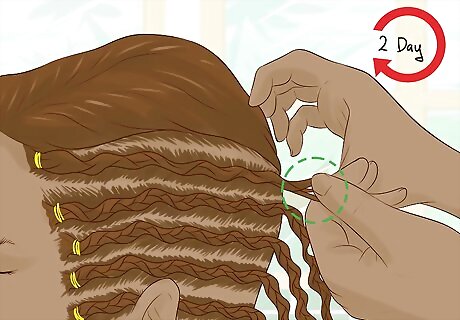
Braid your hair for 2 days. Untangle your hair with a long brush and divide your hair in 3 sections. Cross the left section over the middle, then the right section over the middle. Continue to alternate crossing sections over the middle until your hair is completely braided, then secure the braid with a ponytail holder or an elastic cinch. Use a ponytail holder that’s translucent or an elastic cinch the same color of your hair.
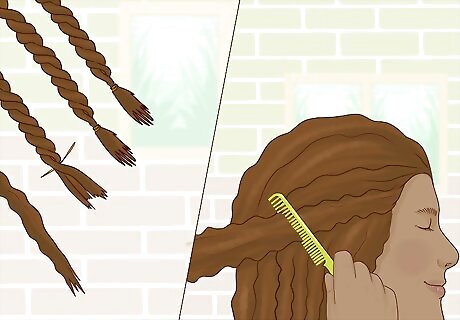
Unbraid your hair after 2 days. Remove the cinch or ponytail holder. Then take a comb and push the pointed end into the braid about a 0.25 in (0.64 cm) from the tip of the braid. Pull the comb downwards gently to begin to separate the braid. Repeat this process, about 0.25 in (0.64 cm) inch each time until the braid is completely loose. Your newly unbraided hair will have more texture and allow your hair to dread easier.
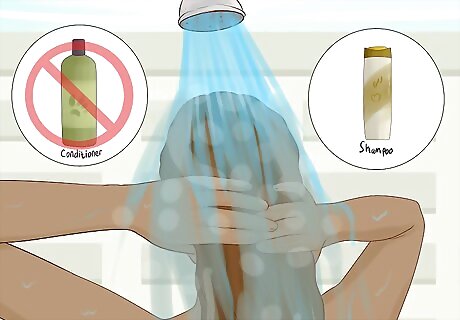
Wash your hair thoroughly. Take great care to remove any residual oils or products from your hair before beginning the next steps. Excess oil can make backcombing significantly more challenging. Scrub your hair vigorously with shampoo then rinse it. Also, remember – no conditioner. Conditioner will make it more difficult to backcomb your hair.
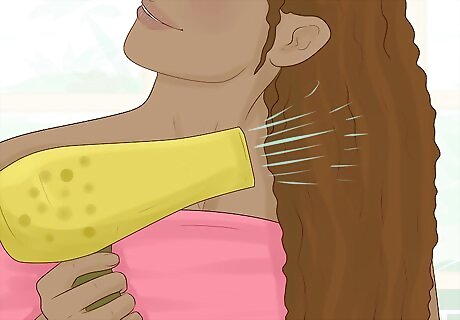
Dry your hair completely with a hairdryer. Let your hair air dry for about 10 minutes before using a hairdryer for best results. Start from the front of your head and move the hair dryer slowly towards the back. Make sure your hair is not damp in the slightest before proceeding to the next step. You can dry your hair with a towel, but hair with even a small bit of moisture in it will be extremely difficult to backcomb.
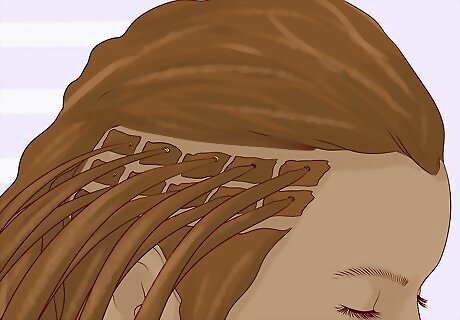
Partition your hair into 1 in (2.5 cm) squares using rubber bands or clips. Twist bunches of your hair into clumps so that the roots are visible. Secure each one with rubber bands such that your head resembles a series of squares from which clusters of hair extend. The large the squares, the thicker your locks will be. To section the hair on the back of your head easily, stand in front of a wall mirror and hold a hand mirror at an angle behind you so that you can see the back of your head. This may be difficult to do on your own, especially with the hair on the back of your head. You may want to ask a friend for help.
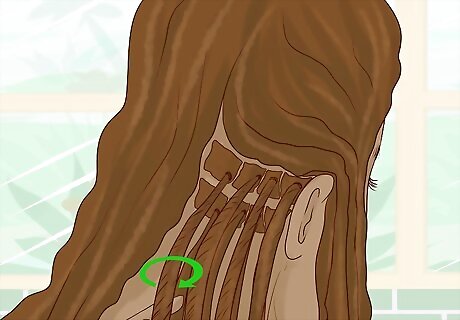
Backcomb a cluster of hair. Starting with the bottom and back of your head, take one cluster of hair at a time and unclip it. Hold it by the tip and comb the cluster from the tip to the root with a fine-toothed metal comb. Your hair will begin to tangle up. Continue to comb your hair until the entire cluster of hair is knotted together. Plastic combs are liable to break during this process so they are not recommended. Secure the tip of each cluster with a rubber band. The rubber band will help the dreadlock keep its shape.
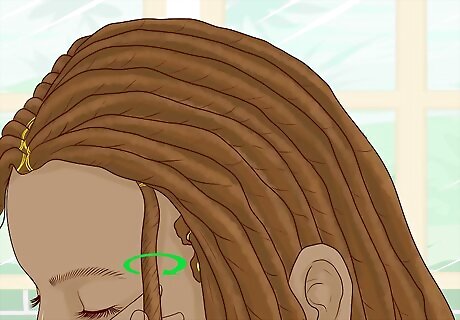
Repeat this process with each cluster of hair. Backcomb until each cluster resembles a dreadlock, then secure the tip of each cluster with a rubber band. This should take 3 to 6 hours. Twist each cluster of hair clockwise from the root to the tip. This will ensure that your dreadlocks are all growing in the same direction and will make maintenance easier. While back-combing you can add more texture to the hair by squeezing lemon juice onto the section and letting it dry. Citrus will de-grease the hair and damage it very slightly on the outside, which will make it more textured.
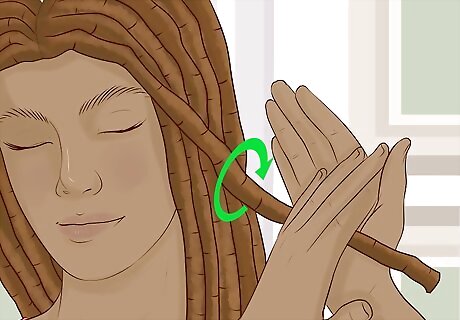
Palm roll your locks to help them maintain their shape. Using your palms, roll each dread individually clockwise every couple of days. This will help your hair lock naturally and speed up the time until they mature. If certain dreads are not locking on their own, palm roll them more frequently. You will not need product if you do this consistently. Avoid rolling your locks too tightly as that can cause tension at the scalp and result in hair loss.
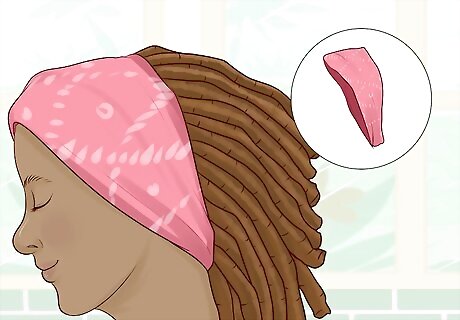
Protect your locks with a bandana. Sleep with a bandana on to keep your night-time tossing and turning from damaging your hair. Wrap a bandana around your head when you exercise or when you go out into the rain or excessively humid weather. Moisture will prevent your hair from locking up. If your hair does get wet, air dry it for about 10 minutes, then use a blow dryer to remove all moisture. Palm roll any individual locks that have started to fray.
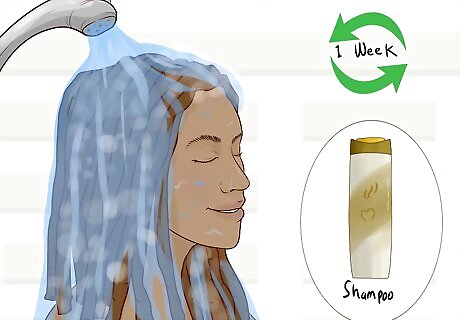
Keep your locks clean and tight as they grow. Wash your hair at least once a week using regular shampoo. Your hair will begin to knot at the roots and then, over the next 3 to 6 months, lock naturally farther away from the root. As they begin to lock on their own, you can remove the rubber bands. If your hair is not locking uniformly, you can remove the rubber bands from the ones that are and keep the ones in that are not.
Twisting Curly or Kinky Hair
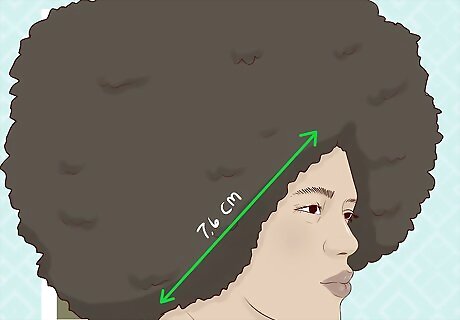
Let your hair grow at least 3 in (7.6 cm) long. Ask your barber to shape your sides and edges to keep your hair looking neat. But if your hair is regularly kept short, stop getting your hair cut for at least 4 to 6 weeks. If your hair naturally grows slowly, it may take longer for it to grow long enough for twists. As your hair grows closer to the 3 in (7.6 cm) mark, avoid the use of conditioner or other hair care products to wash your hair. Just use regular shampoo the week before you plan to twist your hair.
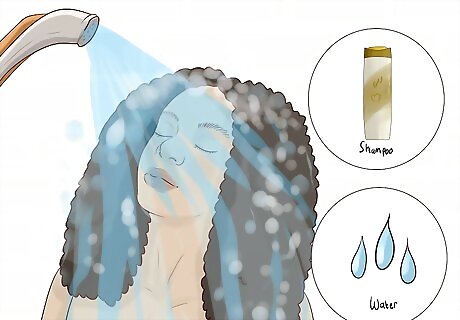
Rinse any product out of your hair. Shampoo and rinse your hair thoroughly before starting to twist it. Products that soften hair rob kinky hair of its natural ability to curl, making dreadlock development more difficult. Make sure to dry your hair thoroughly with a blow dryer before proceeding any further.
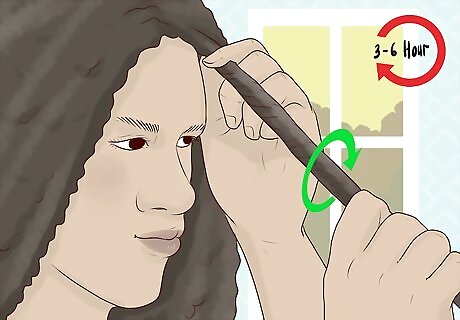
Twist clusters of hair clockwise. The larger the cluster you select, the thicker your dreadlock will be. Using your thumb and forefinger, you’ll want to twist this cluster from the root to the tip. Twisting in a single direction will make maintenance easier. Repeat this process until all of your hair is in twists. This should take between 3 and 6 hours. It’s difficult but not impossible to do this by yourself. Consider asking a friend to help you, or going to a salon to have it done.
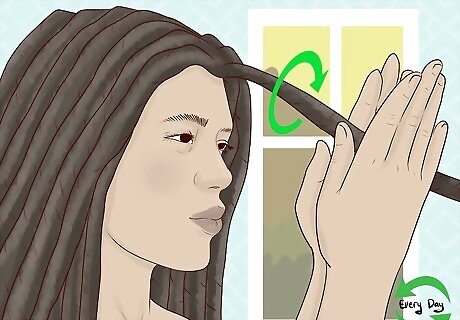
Palm roll your dreadlocks every other day. Roll them clockwise between your palms every couple of days. Start with the root of each lock between the heels of your palms, then roll clockwise and upward until you reach the tip of the dreadlock. Don’t roll them too tight, which can be painful and lead to hair loss. Roll twists that are fraying individually every day to help them keep their shape, rather than every other day.
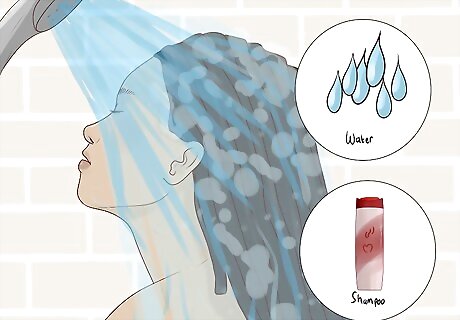
Wash your hair once a week with shampoo and water. Avoid using shampoos with conditioner as these products can stop your hair from locking. If your hair is fraying after a month, continue to wash it once a week. If your hair is getting more compact, wash your hair every other day with shampoo and water. After a month, wash your hair every other day. Protect your locks from excess moisture by using a bandana when exercising or going out on hot days.
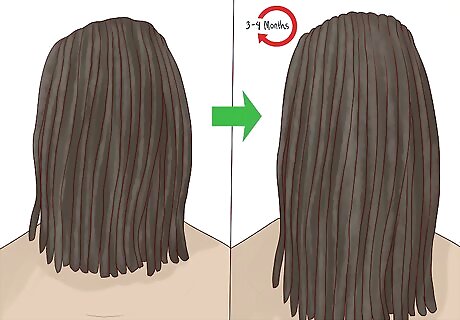
Allow your hair to grow for 3 to 4 months. Continue to palm roll and wash your dreadlocks every other day. Palm roll individually fraying locks more frequently. If multiple locks are loosening, reduce your hair washing frequency to once weekly. If your hair continues to fray, schedule an appointment with a stylist who may be able to help you get your locks back on track. By this time, you should have long, beautiful dreadlocks. But don’t stop maintaining them by palm rolling and washing them.
Using a Hairstylist
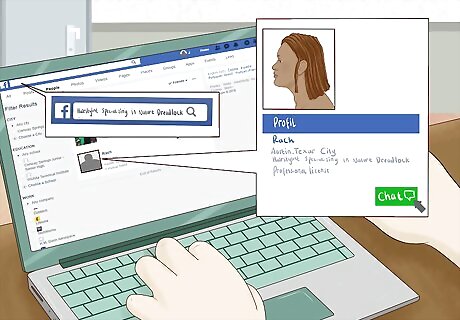
Look for a hairstylist specializing in natural dreadlocks. You can look online for local hairstylists with experience, but it may be better to seek referrals from friends and family. Salons and stylists can be costly and time-consuming, so you need to find someone with real experience. Find someone professionally licensed as a hair stylist. While an unlicensed friend or relative may offer you a good rate, you'll likely have more legal and financial recourse in case of a screw-up if you use a licensed professional.
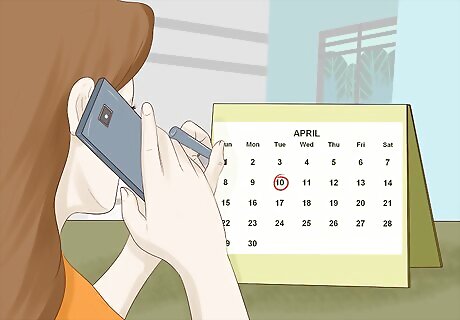
Book, and plan for, an appointment. Call at least a few days in advance of your actual appointment to maximize your chances of getting in to see the stylist quickly. Also, whether the stylist backcombs your hair or twists it, you'll need to block out at least 6 hours of free time max. There'll be a lot of sitting and waiting so bring something along to keep yourself entertained or busy. A fully charged cellphone may do the trick.
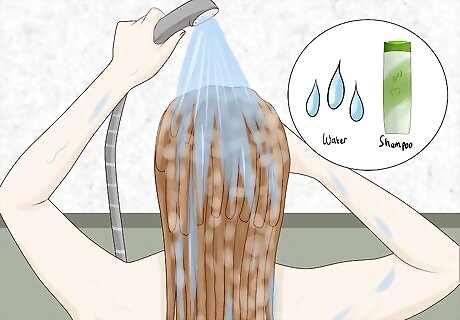
Wash your hair once a week after your appointment. Unless your stylist tells you not to, stick to a weekly hair washing schedule for the first month after your appointment. Use shampoo and water. Don’t use conditioner or other hair care products, which can keep your hair from developing dreadlocks. After the first month, wash your hair every 2 days. Avoid deep massages of your hair. Lather gently with shampoo and rinse instead.
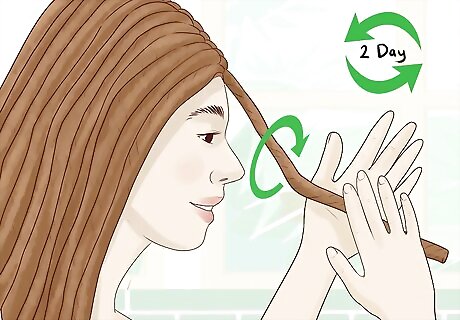
Use your palms to roll and shape your locks. Place each lock individually between your palms and roll the lock with your palms in a clockwise motion from the root to the tip. This motion will help shape your locks and keep them a uniform size. Palm roll your locks at least once every 2 days. Use this method more frequently on individual locks that are not developing as uniformly as the others. You may need to roll these every day, until they resemble your other locks.
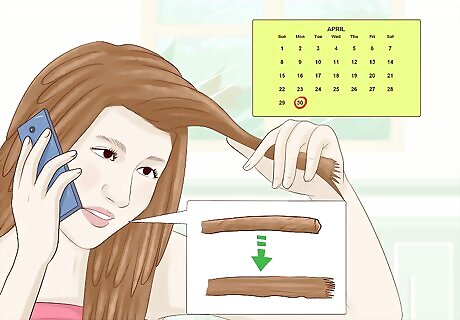
Schedule follow up appointments if your hair fails to lock on its own. If you’ve kept your hair dry, and free of conditioner, as well as palm rolled your locks at least once every couple of days, and your locks are still falling apart, make a follow up appointment with your stylist. They may have additional methods they can use, as well as tips or guidelines for you to follow to help them develop well. Remember to tell your stylist up front that you want to develop your dreadlocks naturally, without product.










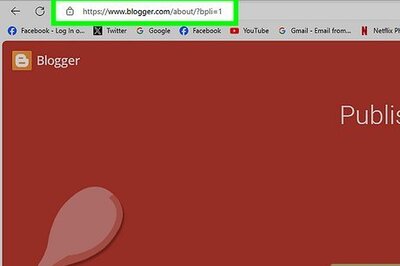








Comments
0 comment